Antonia Hockton has been coming to New College in Oxford twice a year for the past 26 years. She arrives as the students leave, for the long vacation. For this is when her work as a stone conservator with the many statues, memorials and monuments can be undertaken without interruption. And so it is that I have managed to catch up with her. I wanted to find out more about her most ancient of professions. But I was also interested in a particular set of statues she knew well. These figures had once stood high up overlooking the city, at the foot of the spire attached to the University Church of St Mary the Virgin. Replaced at the end of the 19th century after languishing in its basement, they were bought here to New College for rehabilitation.
I came across them when, after attending evensong in the chapel. I’d taken a wrong turn and found myself in the 14th century cloisters. There was no lighting and, despite only a gentle breeze, the rafters seemed to move and creak. Feeling spooked I was just turning to go when a shaft of moonlight, hidden before by cloud, illuminated the face of what looked like a seven foot giant. And there were nine more of these beings, huge stone figures, some with staffs, others with croziers, crosses and mitres. They were arranged as sentinels on the corners and along the aisles of the covered walkways. I was totally smitten.
Returning in the daylight they have a gentler presence. Here are the saints of their day, St Patrick the patron saint of Ireland, St John the Baptist wearing a wool shirt, St Hugh with his tame swan, St Edward the Confessor and St Cedd. Also St Mary the Virgin with baby Jesus, St William of York, St David, St Thomas a Becket and St Cuthbert holding the head of St Oswald. ‘They’ve become like old friends,’ explains Antonia, as she takes a break to introduce them. ‘I think it must be their stance. They are like biblical soldiers. I feel they are protecting me.’
These are not the original 14th century statues, which was when, according to Antonia, ‘the level of skill amongst stonemasons was at its peak.’ When the Victorian architect TG Jackson, took them down in 1896 to install the present reproductions made by George Frampton (famous for his Peter Pan statue in Hyde Park, but also responsible for many carvings around Oxford) his report was damning. Centuries of inclement weather, bad patching with totally inappropriate materials, and several inferior replacements had – he claimed – made them and much of the masonry a public hazard. There were finials and crockets that had fallen from above, piled around the church. Jackdaws had made nests behind their hollow backs, their once wooden croziers had rotted away, and the metal bars that held them in place were completely rusted. On Sunday March 17 1889 there was ‘serious alarm caused by the fall of the face of one of the statues close to the north door of the church, just after the congregation had entered for the University Sermon.’ I am not surprised.
There were more bits missing and they were pitch black, remembers Antonia when, after another century of neglect, she was commissioned to perform her magic. Apprenticed at Lincoln Cathedral, working with stone was something she had always wanted to do. ‘Way back in my ancestry on my mother’s side there were French stonemasons ,’ she explains as we pause to admire the figure of St Cedd, her very first patient all those years ago. ‘Stonemasons were always journeymen, going from building to building, just as I still do. And I believe they came from France to the West Country and then one came up to the Midlands where I am from, where they happened to meet my great grandmum. Some of his work can still be seen on the Coventry Town Hall. ’
Dexterity and patience are the most important requirement for the job. A steady hand is essential. A slip of the wrist could ruin months of work. What Antonia is doing is sympathetic restoration. ‘I was asked to put features back to how they would have looked like,’ she explains now in front of an imposing St Mary and a rather grumpy Christ child. Both have alarmingly out of proportion, large heads apparently so when seen high up on the church they did not look too small. ‘For this one I had to put a whole new head on the baby,’ she smiles. ‘People have said to me couldn’t you have made him a bit prettier, but I had been given photographs from Jackson’s time as reference. I can’t put my personality in really.’
When the statues were first carved the stone would have come from local quarries, no longer extant. The belt of limestone is still there, however, running down from Lincolnshire, snaking across Oxfordshire and then under the channel to Northern France. The honey colour that you see in so many Oxford buildings comes from its high iron content, particularly in this area. As there was not enough height in these beds of stone to make the tall stature needed, they had to either be carved in sections, or by what is known in the trade as ‘off the bed’. This is when they turn the block upwards so the layers are stood on end. But this creates a vulnerability that explains the deterioration of the pieces. It was the rain seeping in through the head that would have caused the face of that archbishop fell off.
Antonia uses lime mortar, an aggregate of crushed stone dust coloured with earth pigments, to mould the shape she wants. ‘It’s the same components as the blocks in the wall behind are made of,’ she says of the warm stone used to build the then new college founded by William of Wykeham in 1379. ‘It’s just the seabed really. The bones of millions and millions of sea creatures. It’s amazing to think we dig something out of the earth that was once miles under the sea and then carve it.’
Antonia holds a dignified respect for the subjects she is tasked with restoring. Many of the tourists, including the hoards of Harry Potter fans who come here to see the Holm Oak featured in the film ‘Harry Potter and the Goblet of Fire’, don’t seem to hold the same regard for these old stone dignitaries. ‘They stand on them, they pull the hands off, they are something to take your picture in front of,’ says Antonia, who had to repair a missing finger just this morning. ‘We live in a selfish world, but in medieval times where people starved and died of disease, we humans were not seen as the ultimate deciders of everything. This work was done for the glory of God. He was the client. I’m not religious but it’s a beautiful thing to think not everything is about us.’
And with that she dons a face mask, and climbs back up the scaffolding to her current assignment, restoring the College’s Saint Loe monument. The aged inscription mourning the death of a young man of 26 in 1675 will be gilded, and the carboniferous limestone waxed to bring it back to its original black. Next to her stands St Hugh of Lincoln, the place where her work first started and in whose diocese Oxford once was. He’s my favourite figure, lovingly caressing the neck of his pet swan, the fluidity of his bearing hinting at his medieval ancestry. It seems fitting he is has come to rest in this place, the only cloister in the city where you enter the same way as you depart, its sole purpose quiet reflection. And as I take my leave I can’t help but feel they both look serene and happy. St Hugh in his retirement, with Antonia at hand should he require attention.
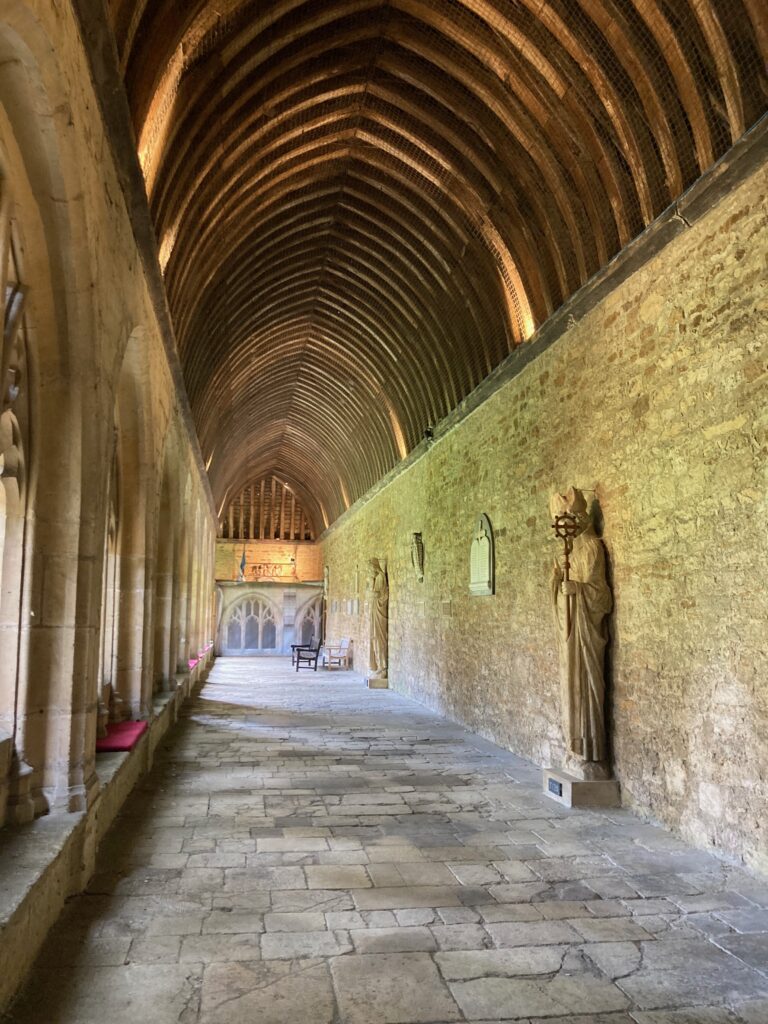
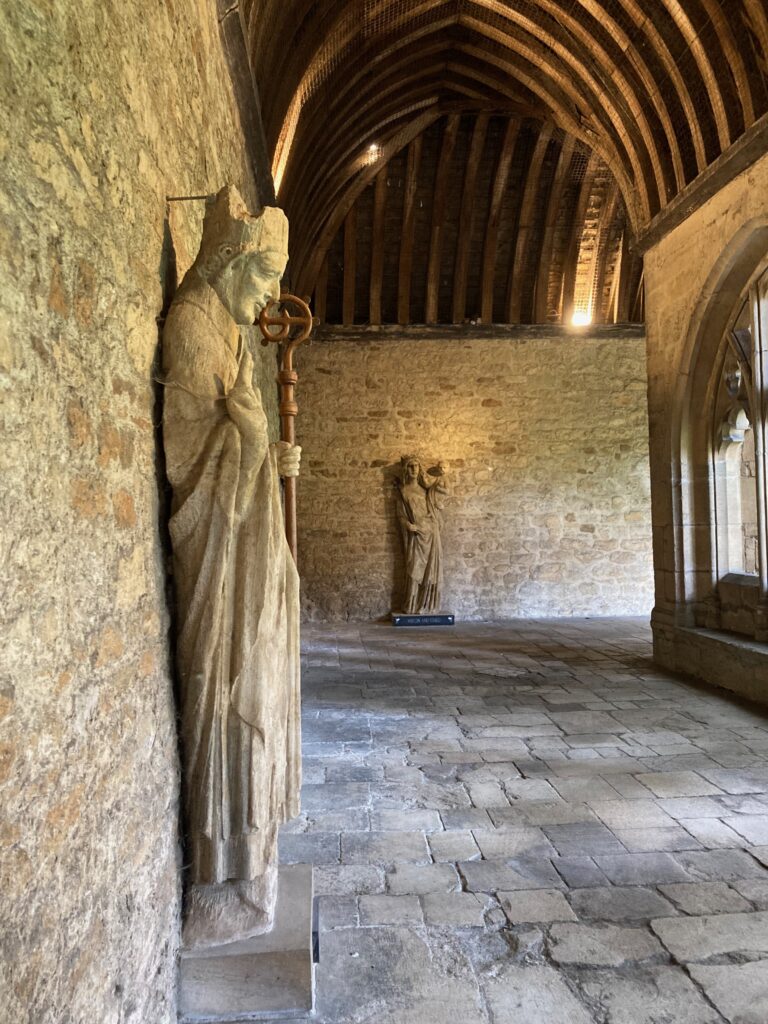
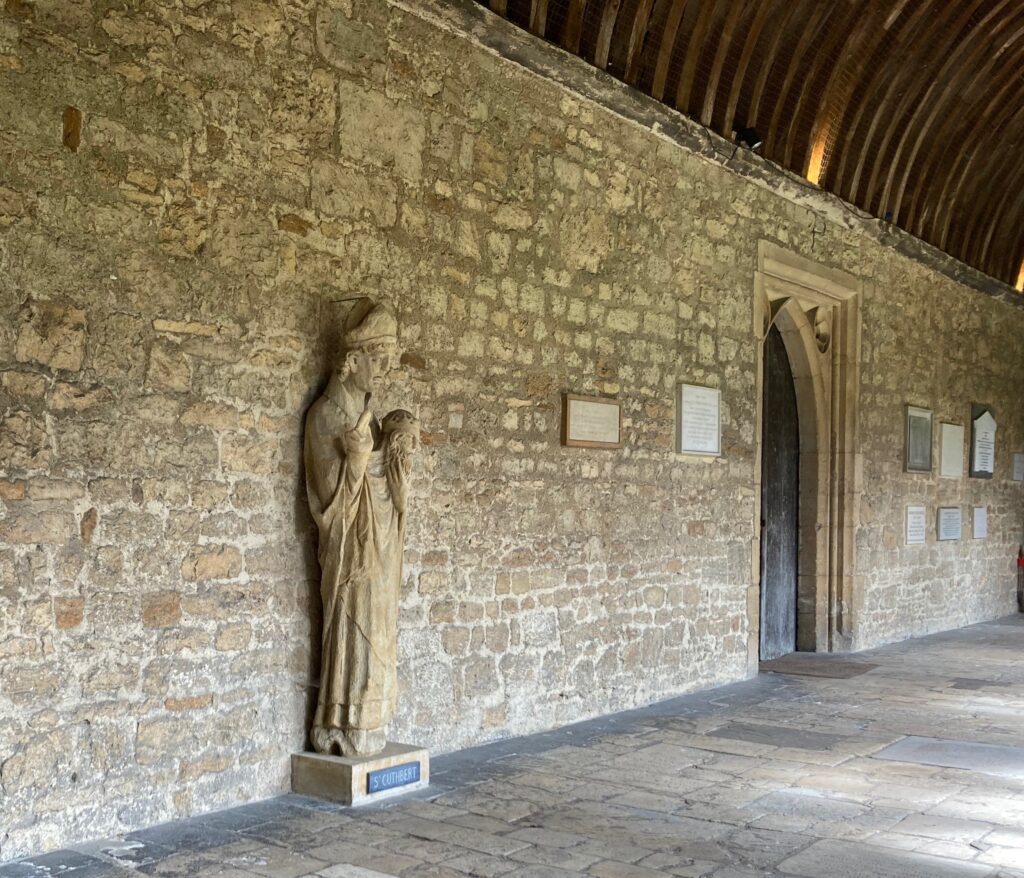
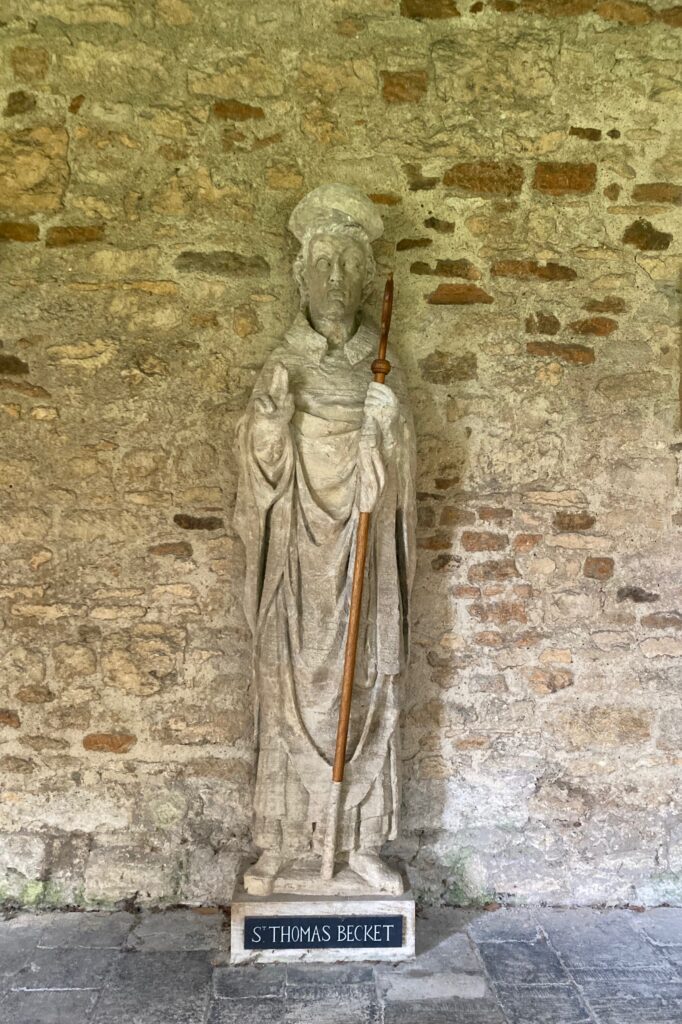

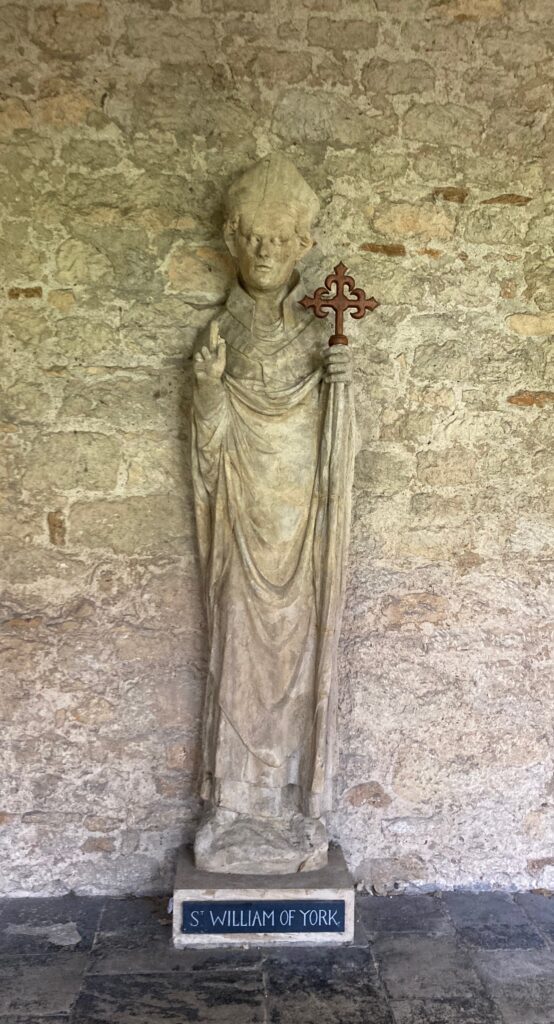
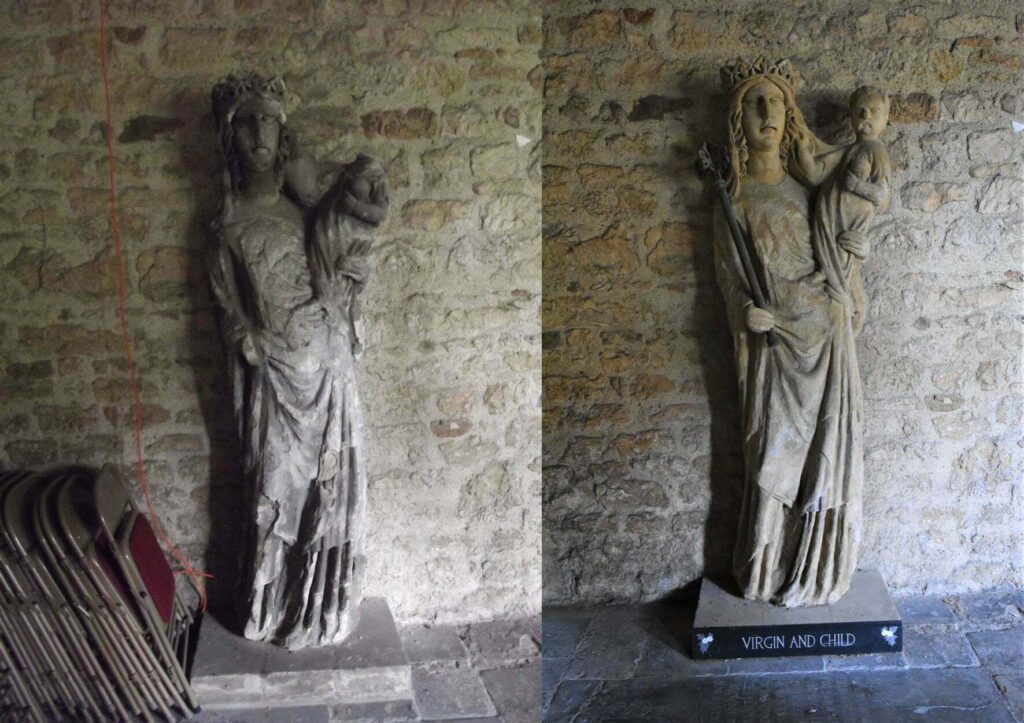
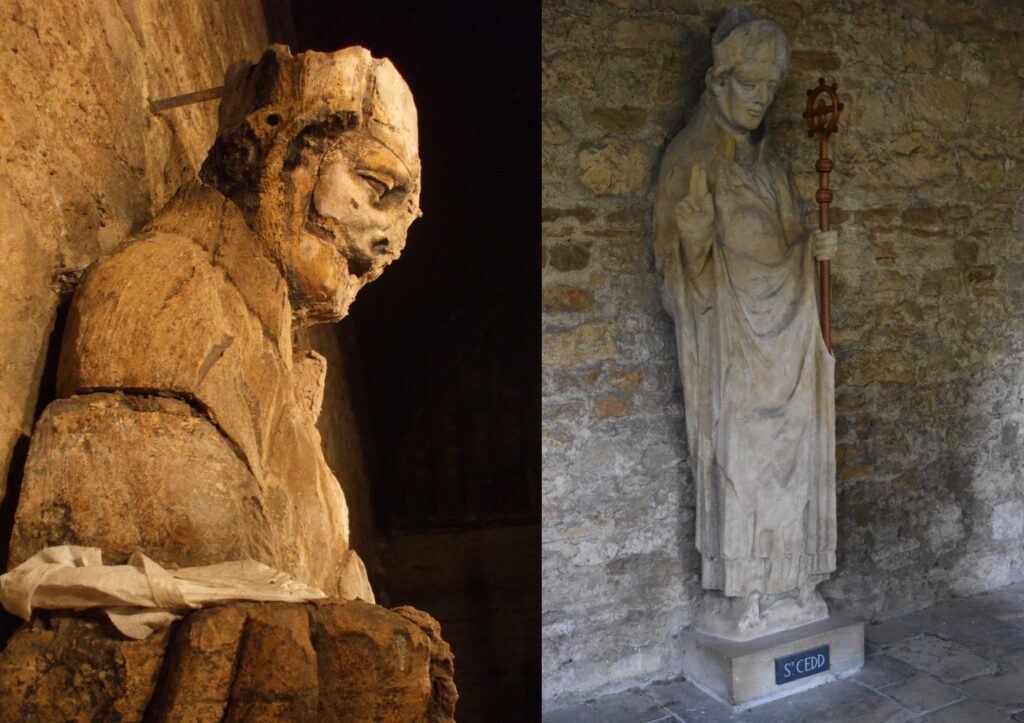
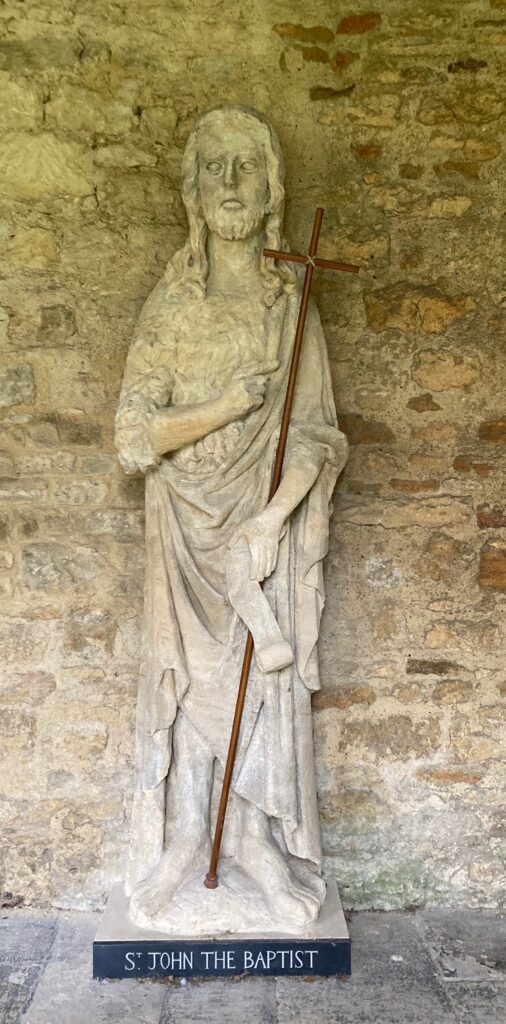
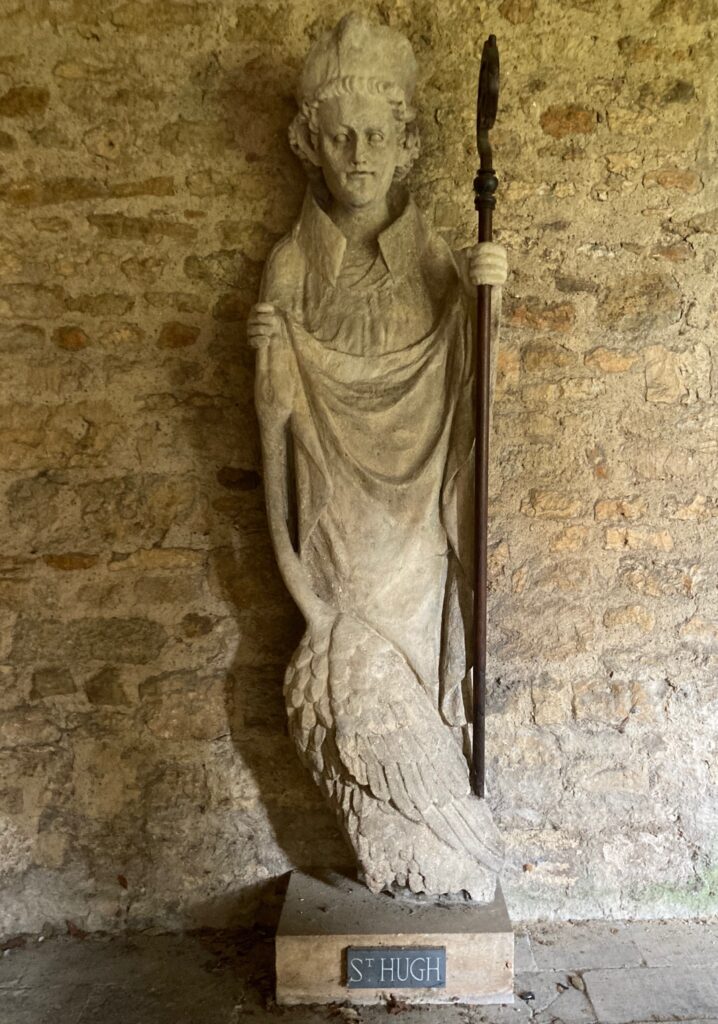
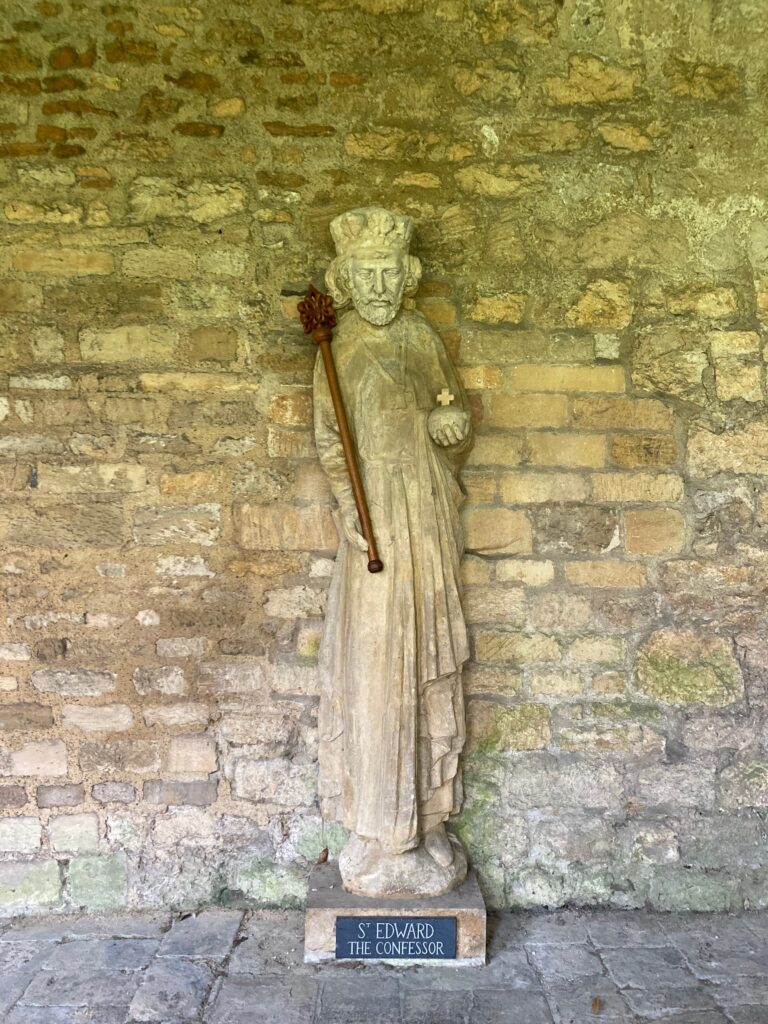
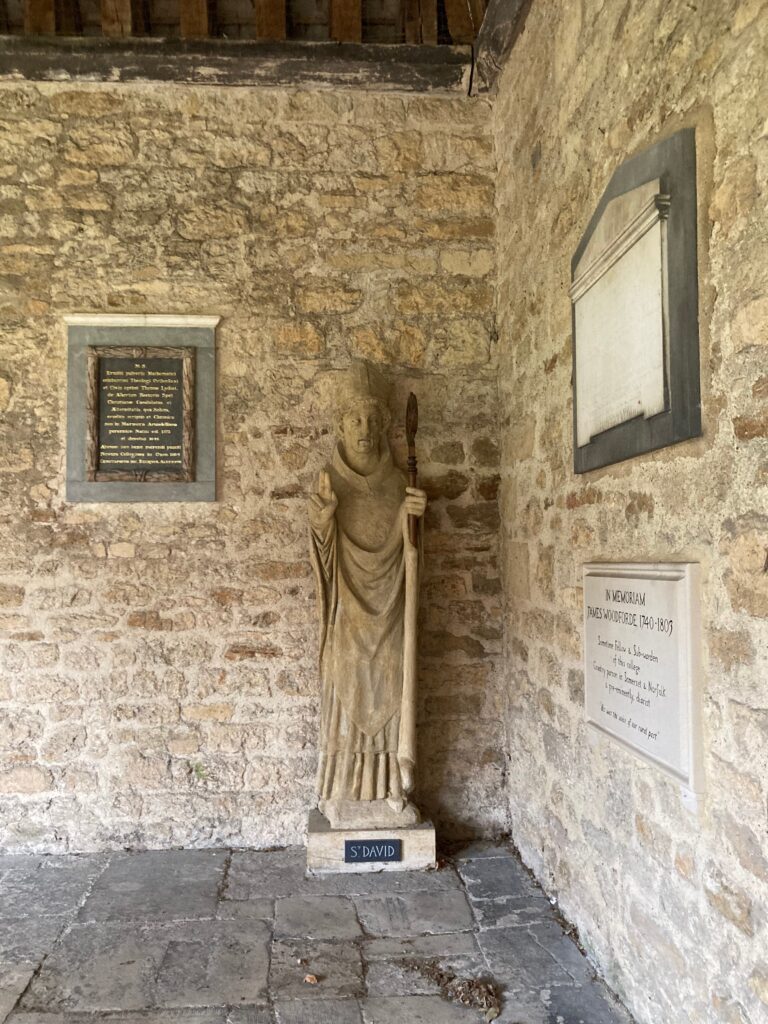
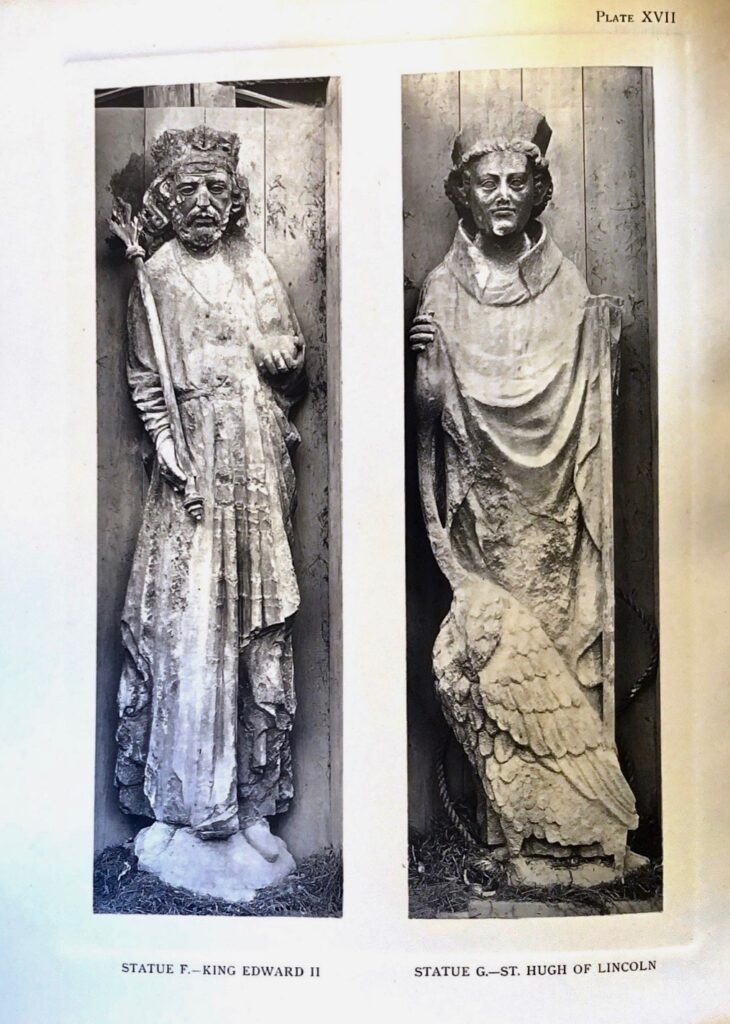
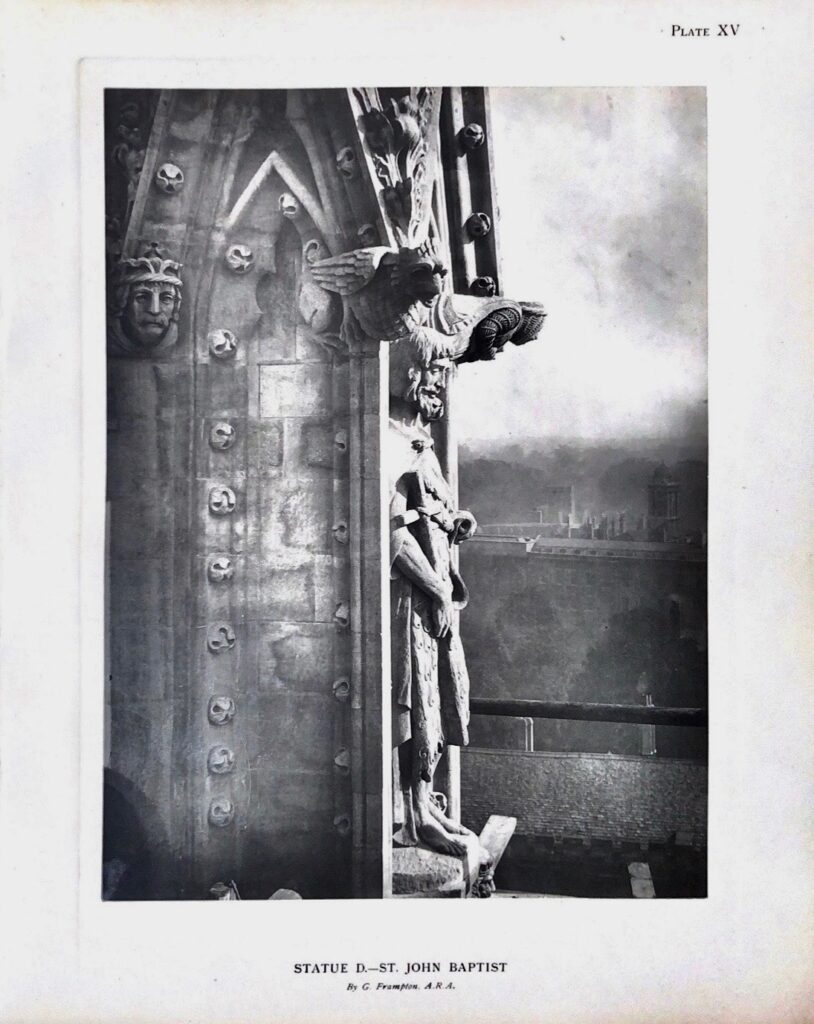
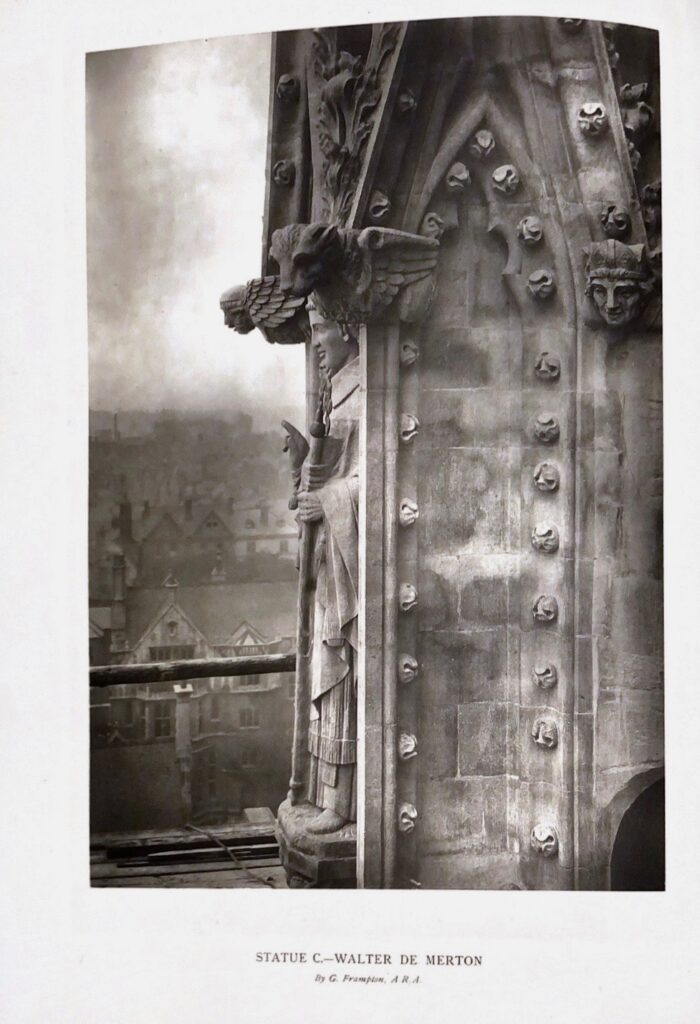
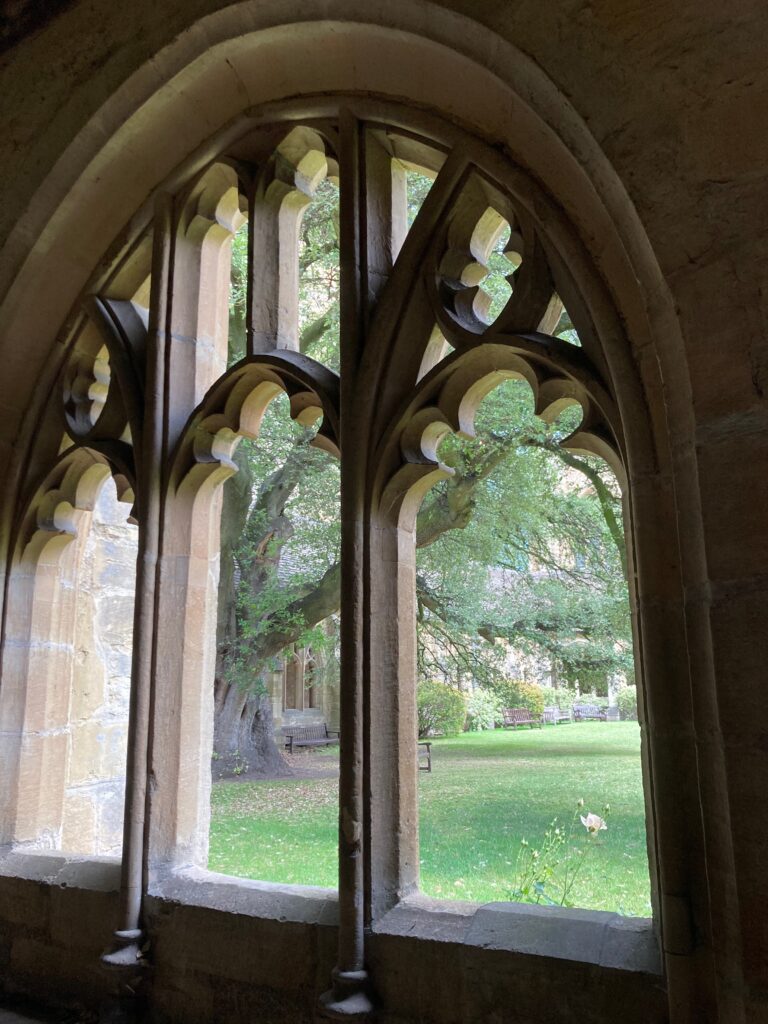
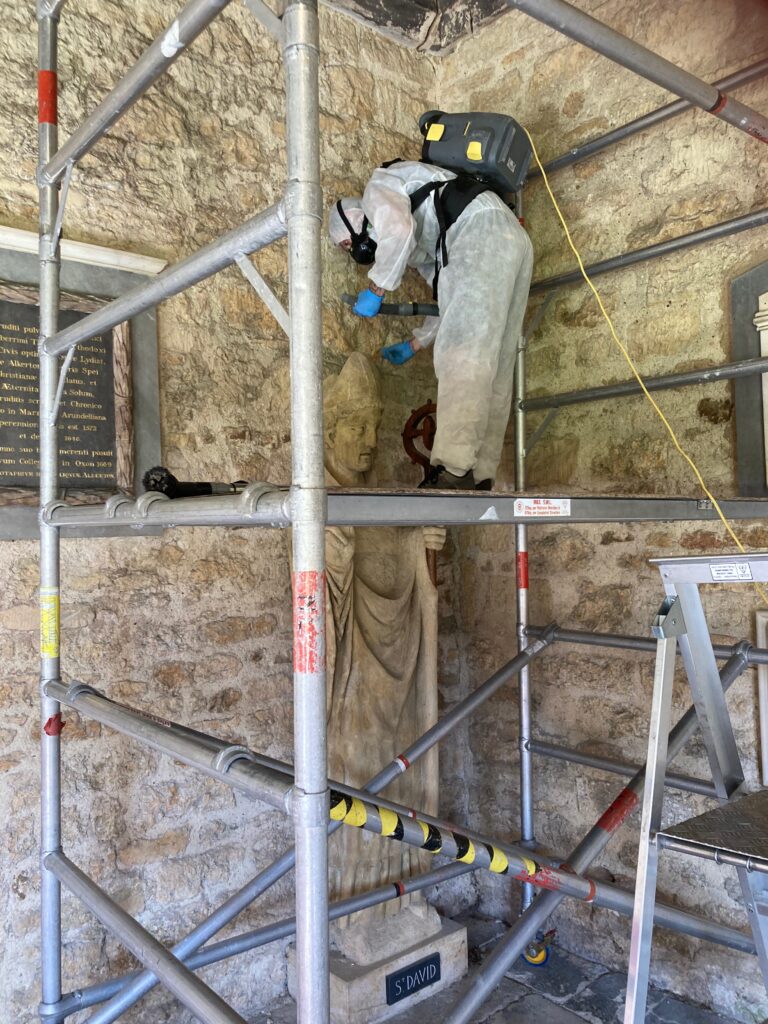
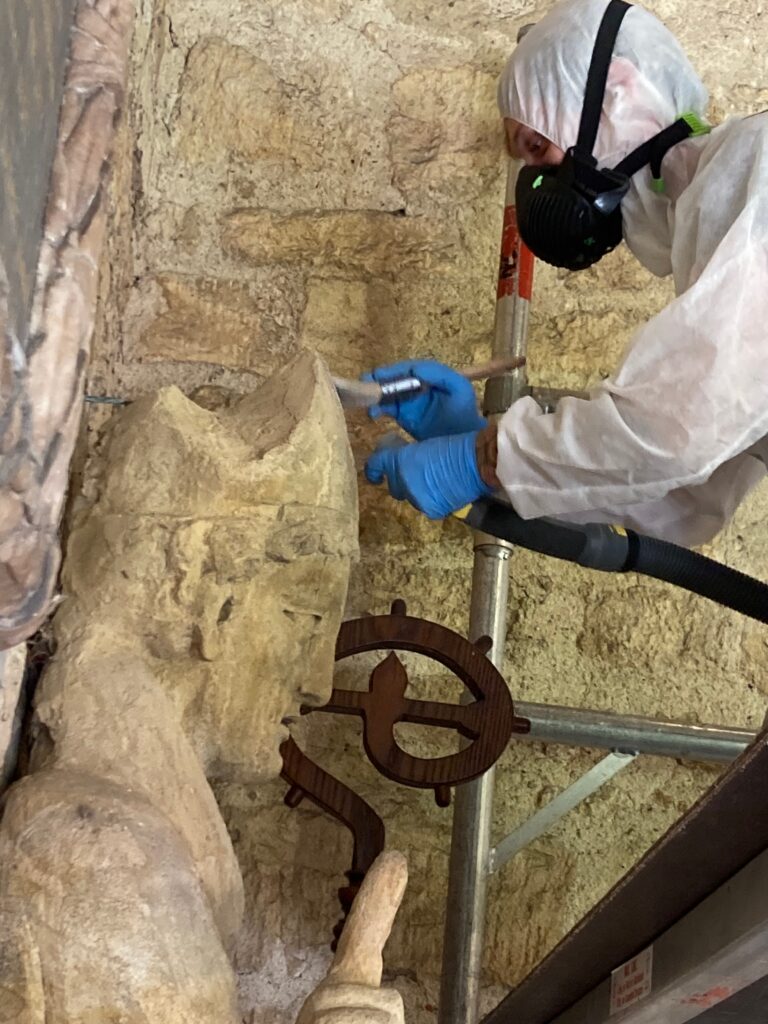
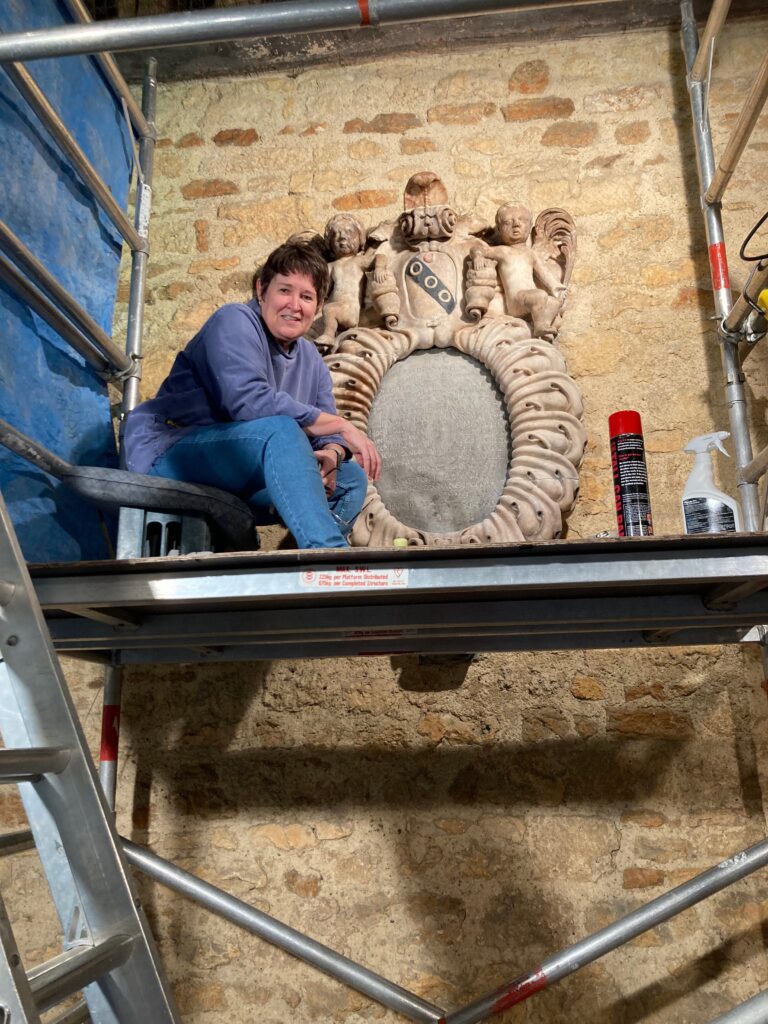
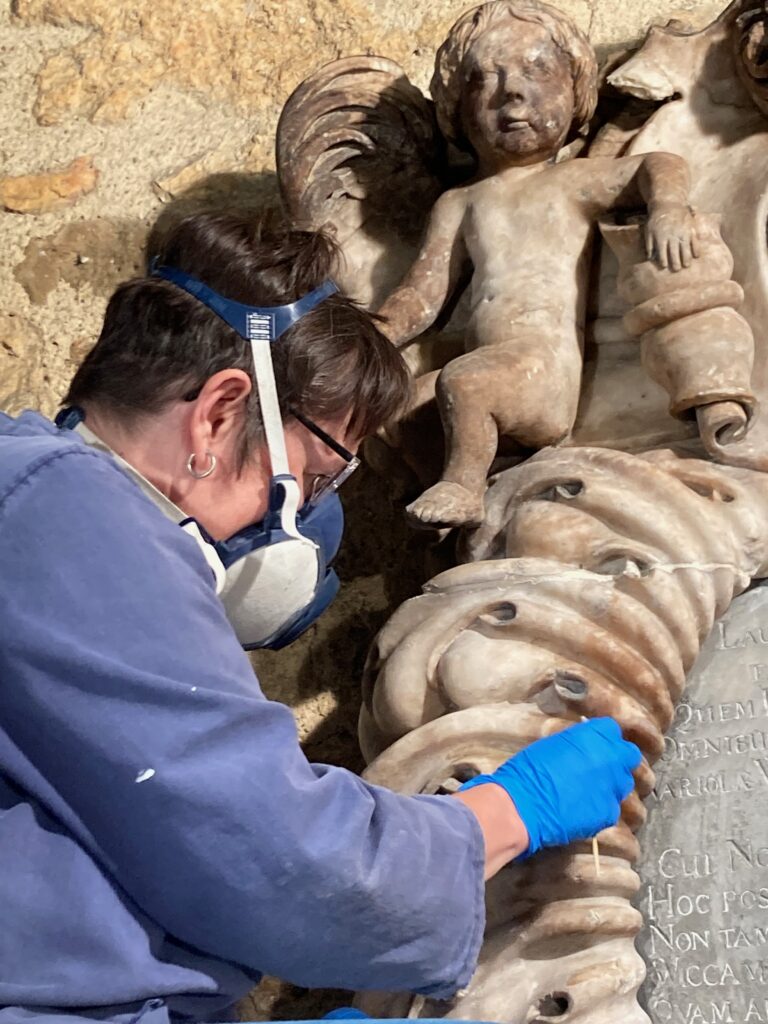
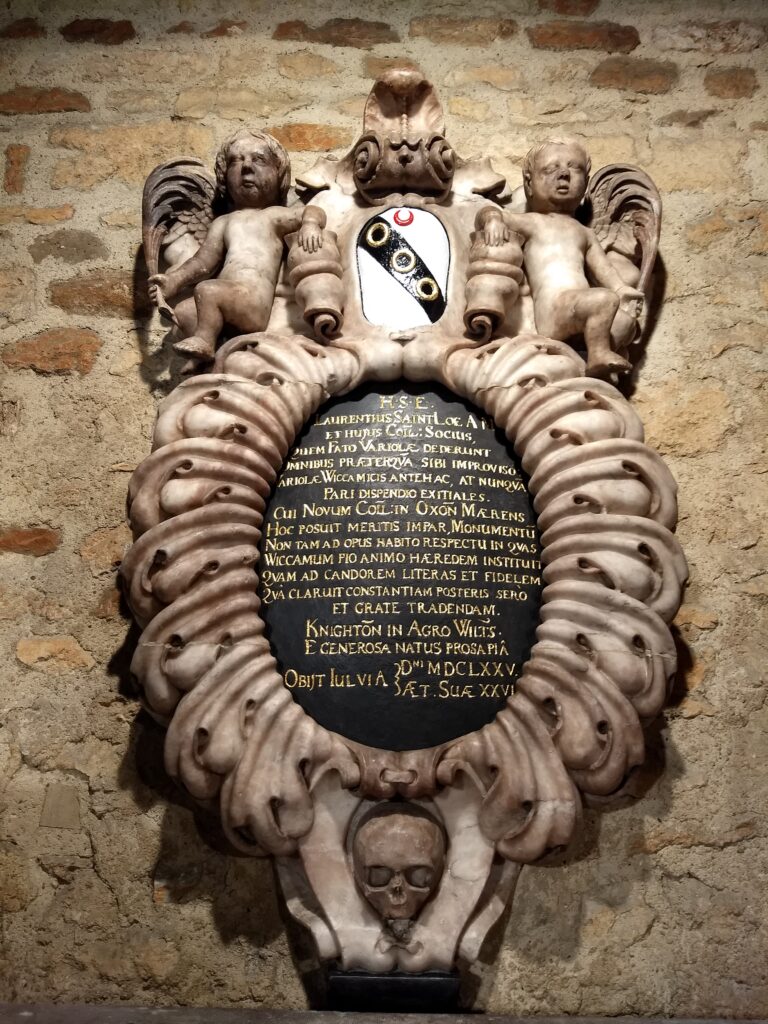
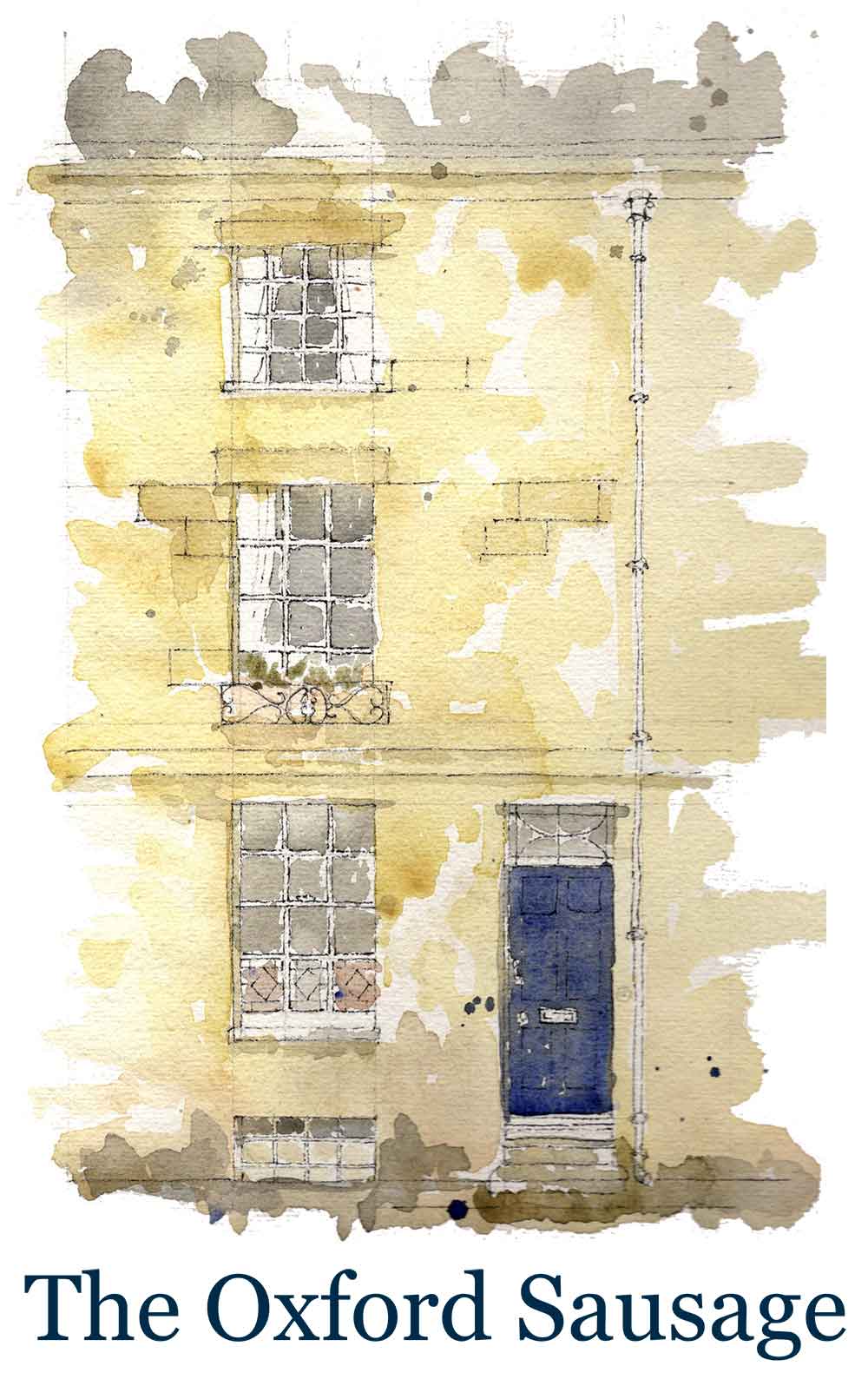
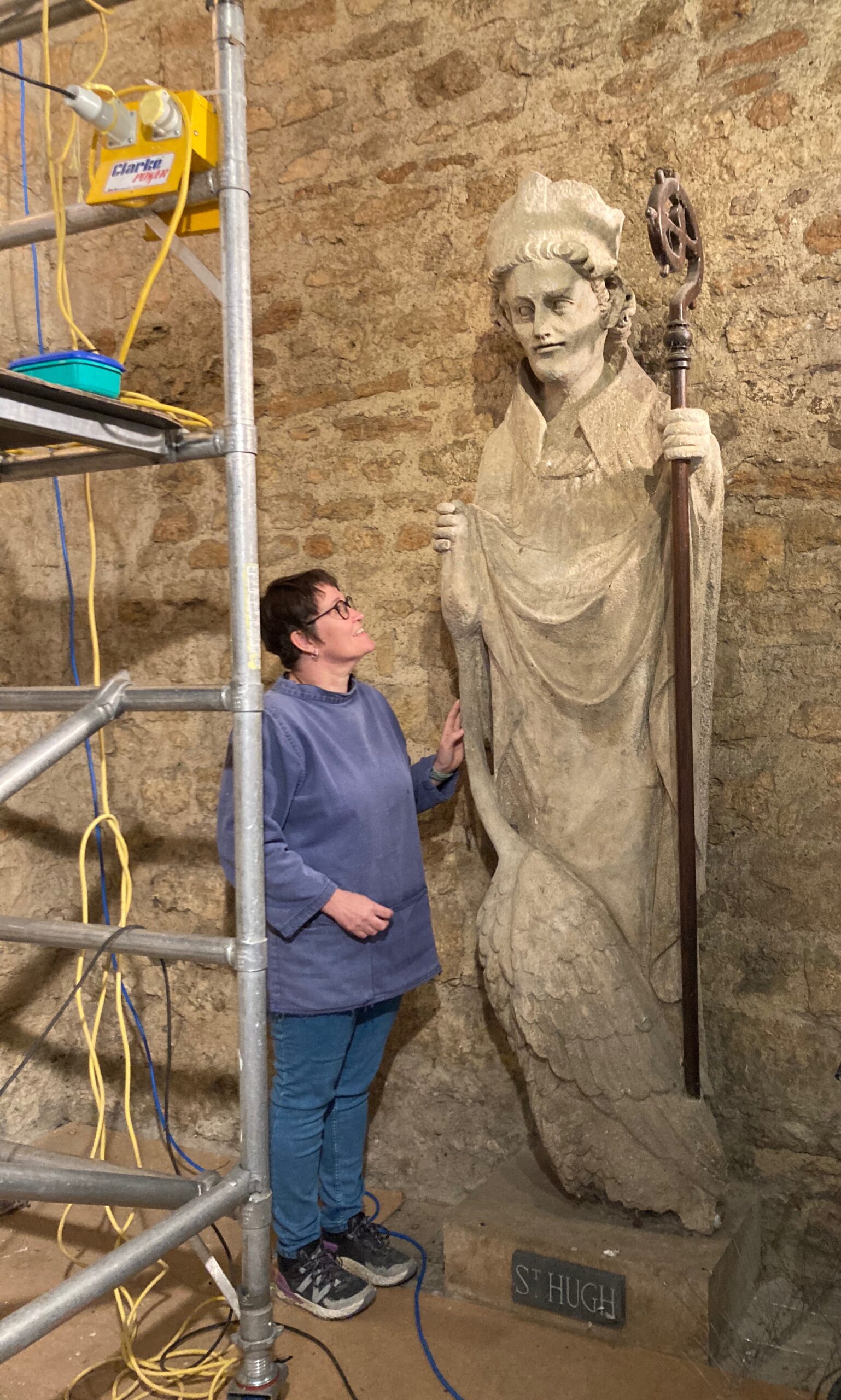
2 Comments
Join the discussion and tell us your opinion.
Thank you so much for these images. Absolutely fascinating. I live locally so must get back there soon while I still remember the comments.
I feel I want to take sandwiches and spend a day watching Antonia at work. How marvellous that there are such skilled people making this their life work!